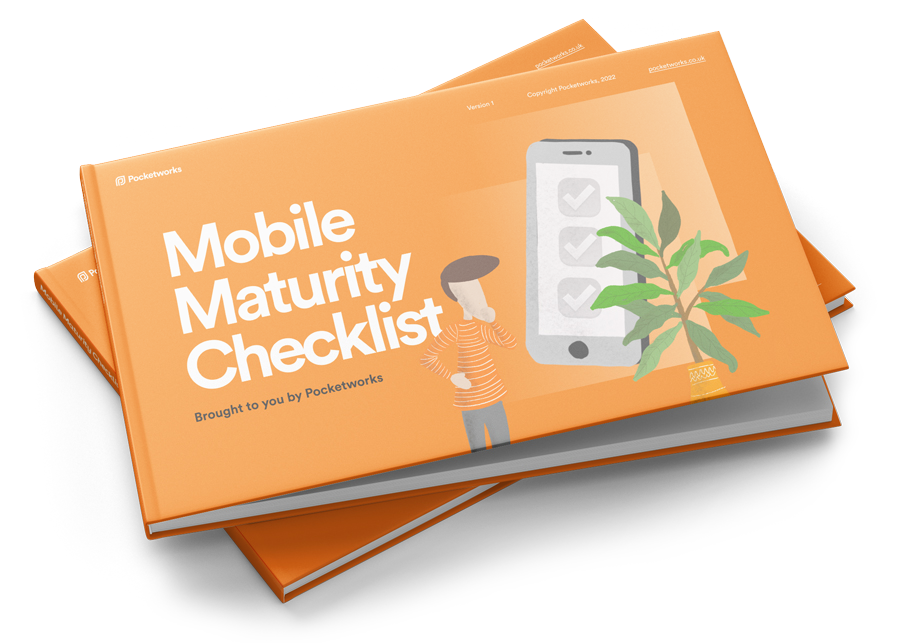If you’re struggling with where to start with paid acquisition for your app, or even wondering if paid acquisition is a channel that is worth investing in. This guide is for you.
I’ll run through the recommended process to follow and give you some tips on the data points and KPIs that will help you to assess the efficacy of your paid campaigns.
P.S - If you haven’t already, check out our previous report Badly Drawn Mobile. It’s a short illustrated guide that helps you make the important app decisions.
First things first, it can be very expensive to find the right users
One of the big challenges for subscription apps is finding the right users who will go on to take out a paid subscription.
According to RevenueCat’s 2024 State of Subscription report, across all categories and countries just 1.7% of downloads turned into paying subscribers within the first 30 days.
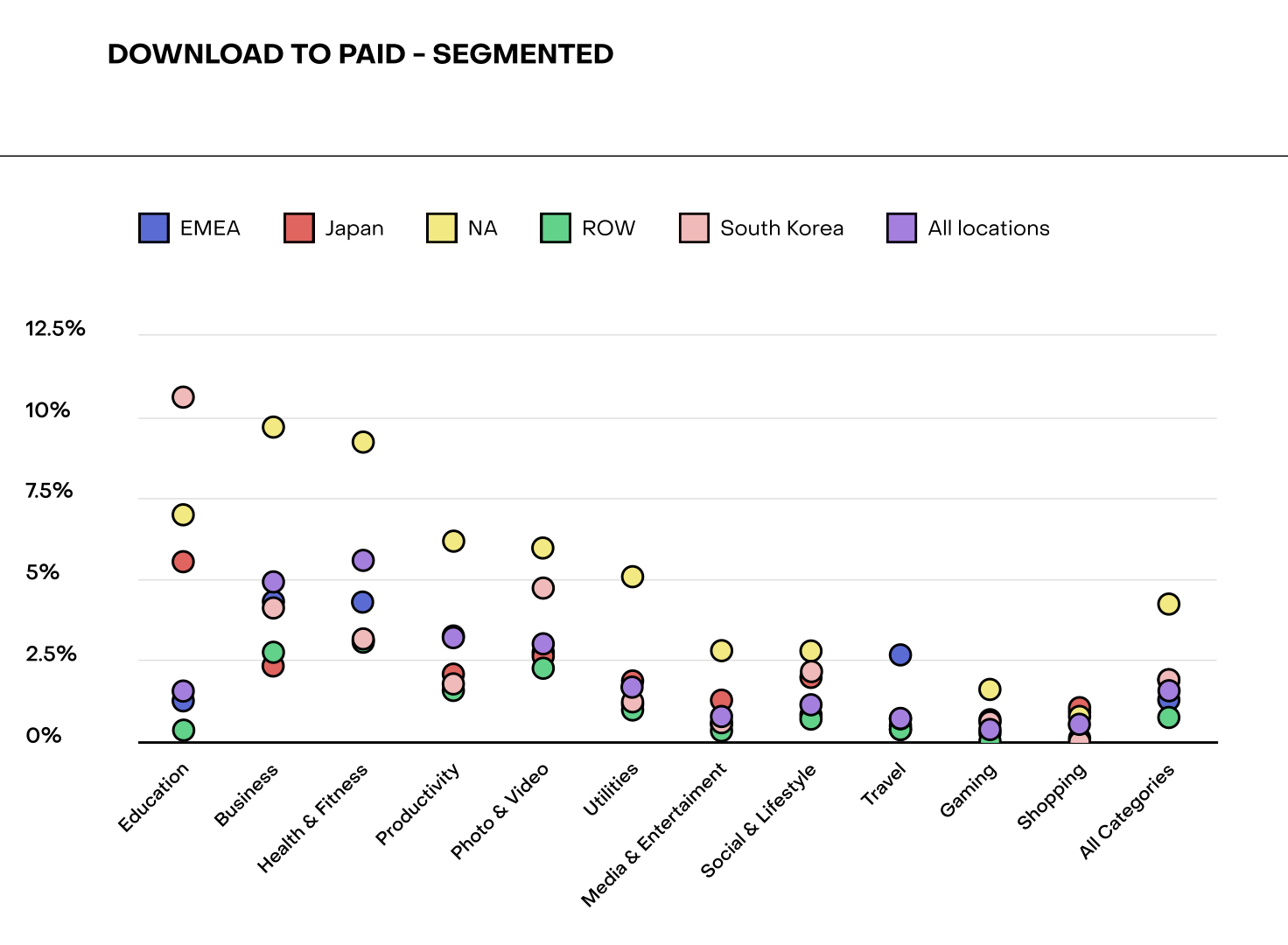
Chart from Revenue Cat’s State of Subscription Apps 2024 report
If you’re looking at running paid campaigns for your subscription app, this figure is probably going to be the most important measure of success for your campaign.
We see massive variations in this conversion to paid number with the apps we work with. Some as low as 1% and one app is up around 7-9%. It's all about finding your number and factoring this into your campaign model.
Here is an example. You spend £500 on a campaign and get 166 downloads at CPI of £3. If 4% of those go on to take out a paid subscription (7 users), that has cost you £75.30 per user. That means that your customer value has to be at least £75.30 for you to just break even on your spend.
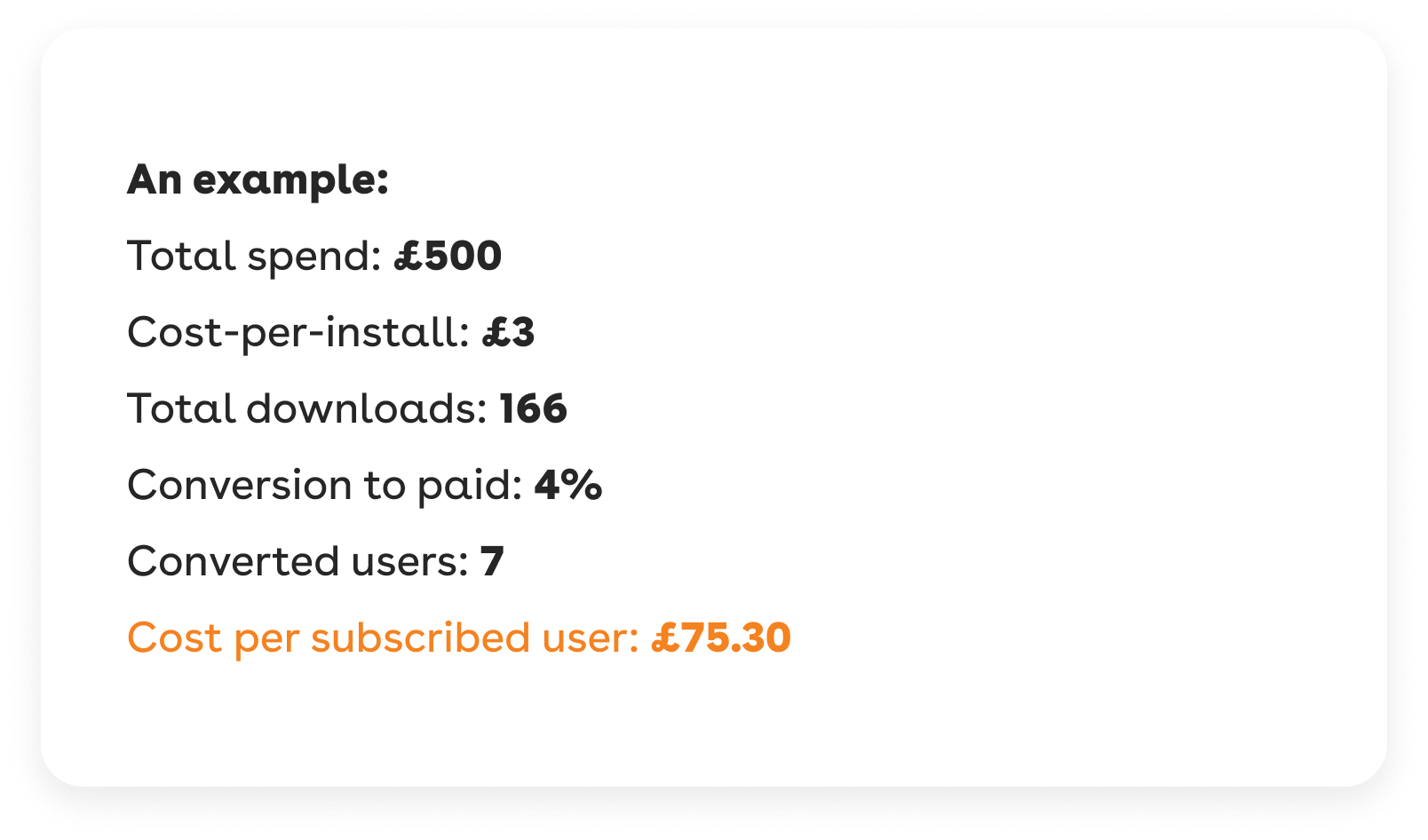
You can also model this backwards. If you wanted to raise £20,000 in new subscriber revenue, in this example it will cost you nearly £43,000. Clearly not a wise way to invest your money!
Note that we are developing a tool called AppFlows which includes a calculator to help you calculate this stuff in seconds.
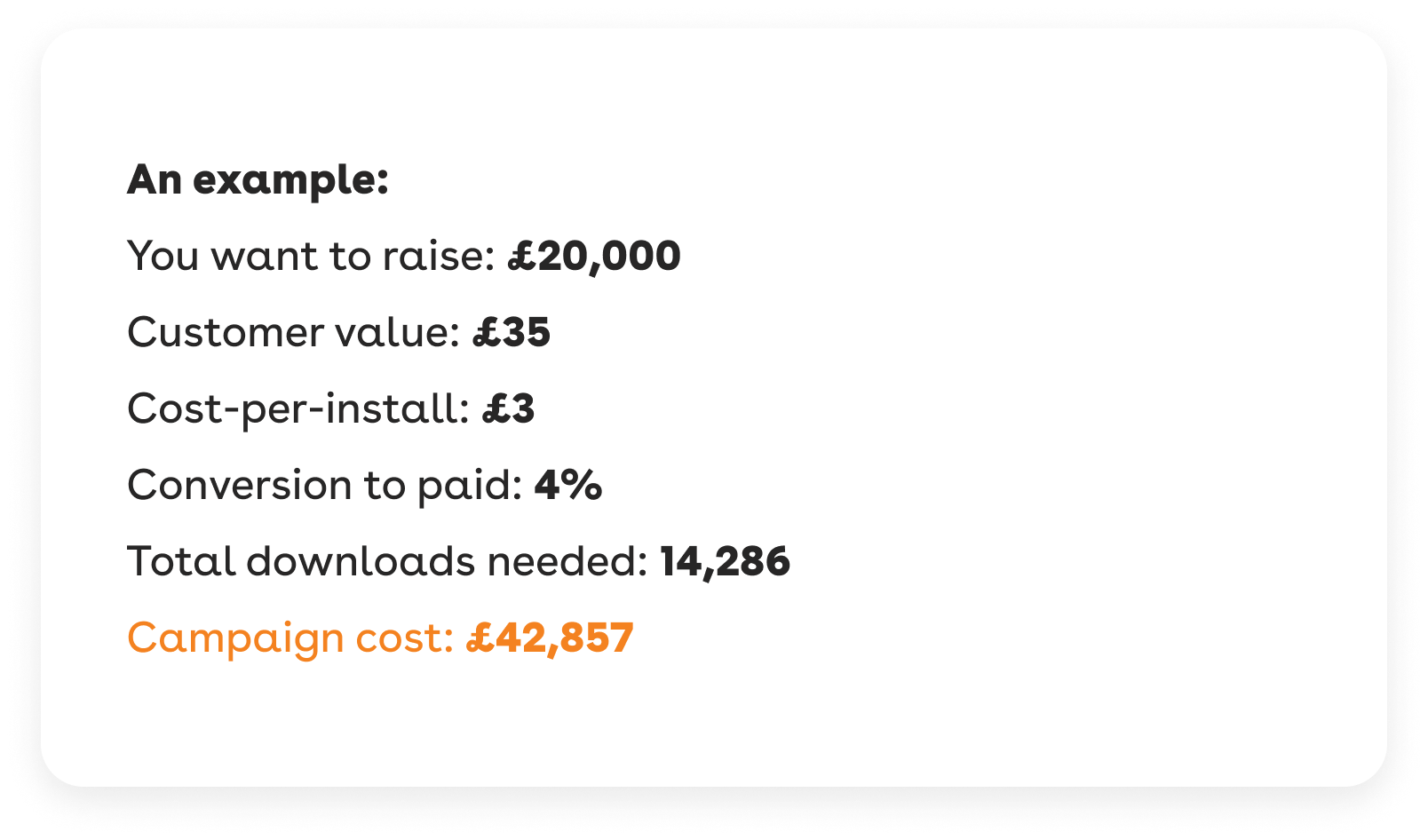
It can be tricky to measure success, so have the right KPIs in place
Without having the right KPIs in place, it can be difficult (if not impossible) to know if it is worth investing in or scaling up activity.
Have a good grasp on your data to be able to understand how effective your campaign is and help you decide whether it is worth continuing. This is done through benchmarks and attribution.
Here is my list of essential KPIs to have in place before running any paid acquisition:
App store conversion rate: What percentage of people typically download your app after viewing it in the store?
- User retention rates: What percentage of users stick around after 7 / 30 days?
- Trial start rate (if your app has a trial) - What percentage of users start a trial?
- Trial conversion rate: What percentage of people go on to a paid subscription after their trial ends?
- Conversion to paid: What percentage of people (overall) take out a paid subscription (regardless of trials)?
- Average value of a subscribed user / LTV
Once you have all these data points, you can measure each step of your campaign to see how it performs versus your benchmark and start to identify which bits are (and aren’t working).
What if I'm not bothered about subscriptions right now? What if I just need users?
Sometimes you might just need to get people into your app and using it. In this case, I'd recommend using your 30 day retention number to work out if your campaign is successful. Whilst you might just need to get user numbers up, there's no point in spending money to bring in users that don't stick around.
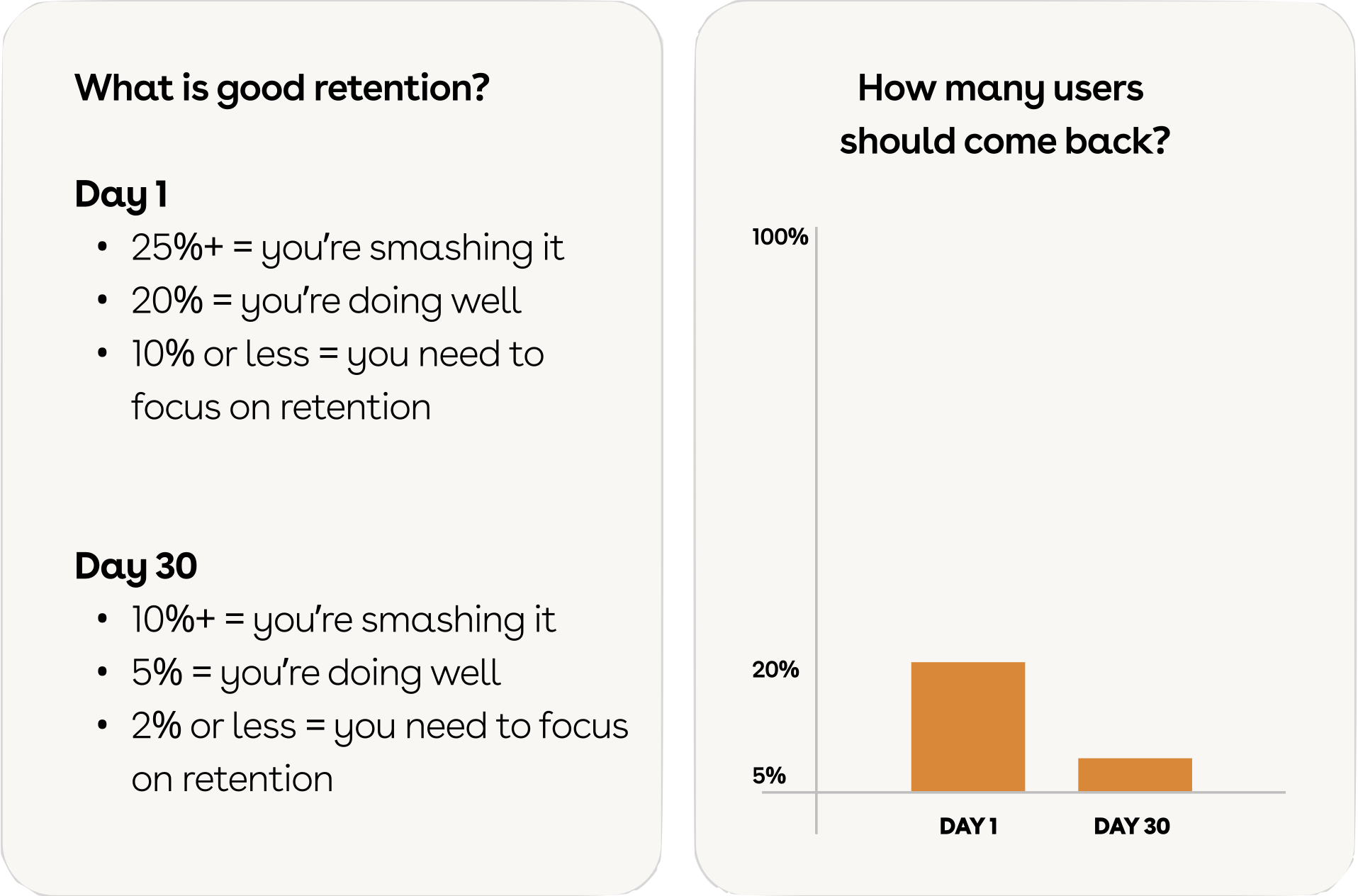
If users from your campaign have a lower retention rate than your baseline, organic user base you might not be attracting the right people.
Keep testing and tweaking to increase efficiency
Once your campaign is up and running, it is very important to keep a close eye on performance - especially in the early days.
Use custom listings to direct campaign traffic to so you can assess the download conversion rate accurately. If the conversion rate is lower than your original listing, make changes and try to customise the page so it is as relevant as possible for the target audience you are seeking to engage.
If your campaign is appealing to different user segments, create a custom listing hyper-targeted to each. This should see your conversion rate (and downloads) improve and cost-per-acquisition go down.
You should also keep a close eye on the targeting you have in place. If your campaign is keyword focussed, take a forensic look into the exact keywords driving traffic. Refining your keywords is the best way to improve efficiency. Consider using exact match and negative keywords to narrow down your target audience. This will probably drastically reduce impressions, but could well lead to an increase in conversions and reduction in spend.
If your campaign is targeting specific user segments, it might be worth digging into who exactly is converting and delivering a good return on investment. Any demographics that look to be inefficient should be removed to see how that impacts overall campaign performance.

